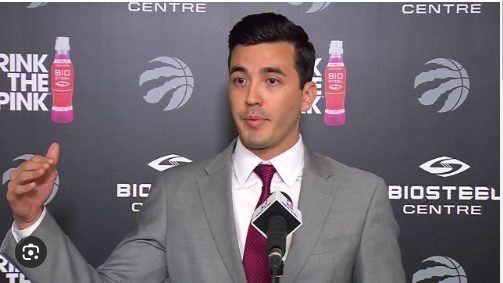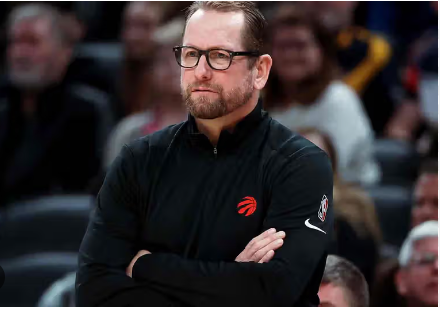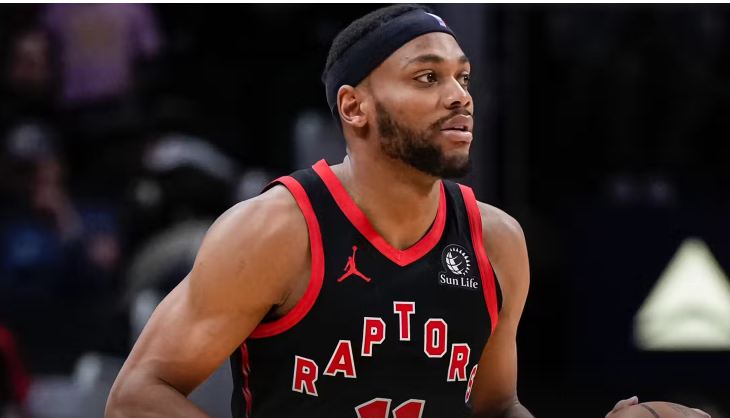Breaking News: Raptors Gain Flexibility Through Tradeable Assets
The Toronto Raptors are in a strong position, benefiting from a wealth of assets that allow them to assess and refine their roster. With all future first-round draft picks and an extra pick from the Indiana Pacers through the Pascal Siakam trade, they have the freedom to make strategic moves. This flexibility, coupled with tradeable contracts and a developing roster, enables the Raptors to methodically shape a potential contender.
Enhancing Flexibility with Tradeable Contracts
Several valuable tradeable contracts bolster the Raptors’ situation. Bruce Brown’s expiring deal offers versatility; as a guard/forward with playoff experience, he could attract teams looking to deepen their roster. Similarly, Chris Boucher’s expiring contract presents opportunities to reduce salary or facilitate larger trades to acquire star players or high-potential talents.
A key asset for the Raptors is RJ Barrett, who was brought in after the OG Anunoby trade. Barrett quickly became vital, averaging 21.8 points, 6.4 rebounds, and 4.1 assists in 32 games. With three years left on his four-year, $120 million rookie extension, Barrett’s contract is valuable, especially as the NBA salary cap rises. His contract, currently over 18% of the cap, will represent a smaller portion as the cap increases, making him more appealing in potential trades. His all-around skills allow the Raptors to take their time before deciding his long-term role.
Exploring Lineup Combinations
The Raptors also have the opportunity to experiment with ball-handling roles, particularly with Immanuel Quickley and Scottie Barnes. Both players have complementary skills, but Quickley’s height at six-foot-two can limit his effectiveness against taller defenses, making it essential for him and Barnes, who is six-foot-seven, to share ball-handling duties. This creates a unique challenge for the Raptors to stagger their minutes effectively while maintaining team cohesion.
Since the Raptors aren’t under immediate pressure to contend, they can explore various rotations, optimizing each player’s strengths. This approach fits their current retooling phase, allowing them to remain competitive while adjusting their roster based on early-season performance.
Utilizing Draft Picks in Strategic Moves
Toronto’s flexibility extends beyond core players. Their recent trade for Kelly Olynyk and Ochai Agbaji illustrates how their draft picks enable them to take calculated risks. In February, they traded Kira Lewis Jr., Otto Porter Jr., and a 2024 first-round pick for Olynyk and Agbaji. Olynyk, known for his high basketball IQ and playmaking ability, fits well within head coach Darko Rajaković’s system. This deal was made possible by the Raptors’ draft capital, allowing them to pursue a medium-risk transaction that could yield short-term benefits while maintaining long-term flexibility.
The Raptors’ core remains a work in progress, and their willingness to make strategic trades, like the acquisition of Olynyk, highlights their forward-thinking mindset. With a diverse array of assets, they can target players who enhance their current lineup while keeping the option to pivot in the future.
Conclusion
As the 2024-25 season unfolds, the Raptors benefit from having time on their side. Their extensive draft picks and appealing tradeable contracts position them well in the trade market. They can either double down on their current roster or initiate a more significant retooling if the season does not unfold as planned. Regardless, the Raptors have strategically prepared themselves to act when the time is right.
With Barrett emerging as a valuable asset, Quickley and Barnes offering flexibility as ball-handlers, and tradeable contracts like those of Brown and Boucher available, the Raptors are well-equipped to explore various paths for team-building. Their future draft picks provide a buffer that enables them to experiment without the pressure for immediate success. If the roster performs well, they can pursue playoff contention; if not, they have the flexibility to retool and rebuild using their draft assets.





